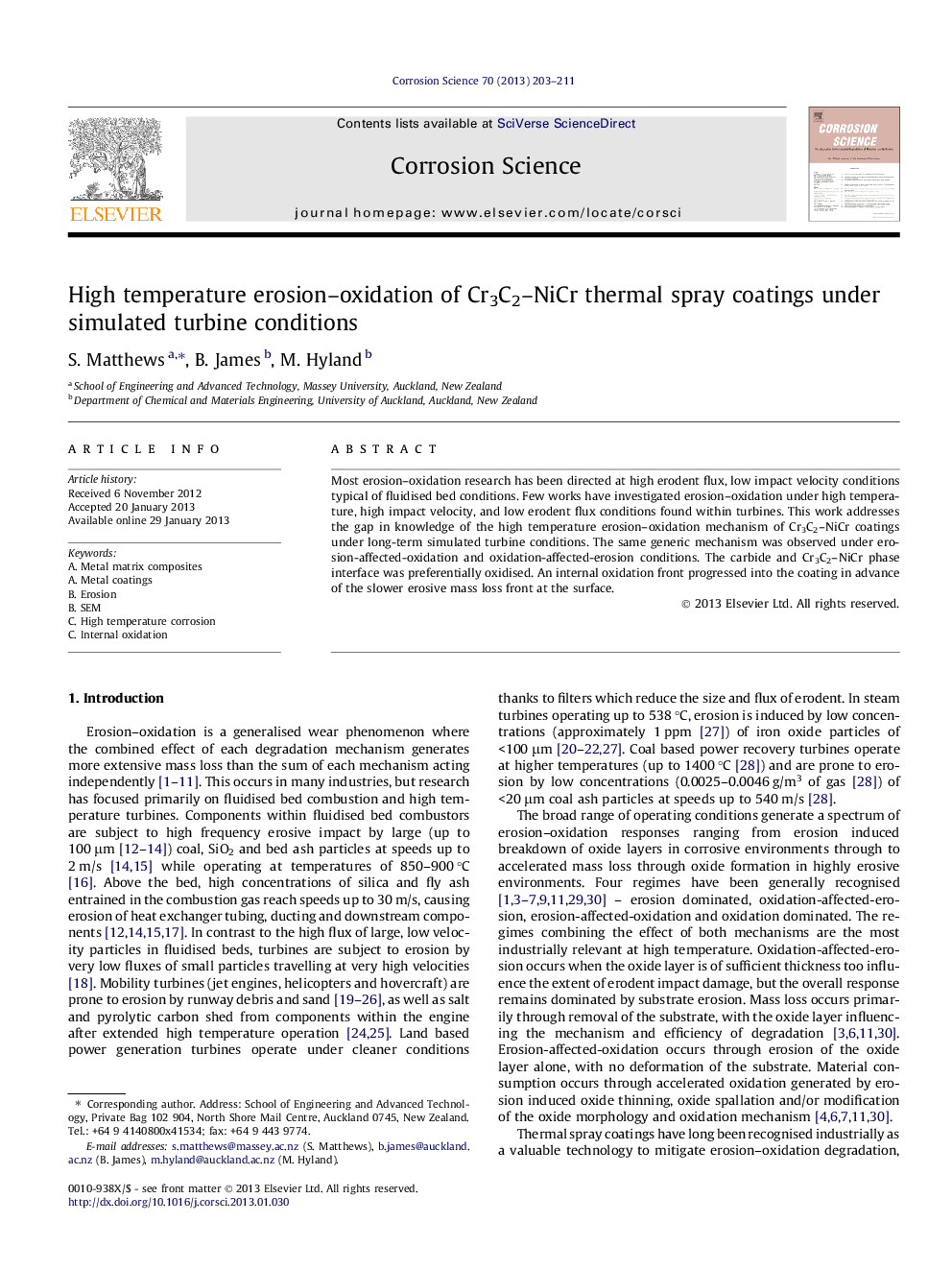| Article ID | Journal | Published Year | Pages | File Type |
|---|---|---|---|---|
| 1469195 | Corrosion Science | 2013 | 9 Pages |
Most erosion–oxidation research has been directed at high erodent flux, low impact velocity conditions typical of fluidised bed conditions. Few works have investigated erosion–oxidation under high temperature, high impact velocity, and low erodent flux conditions found within turbines. This work addresses the gap in knowledge of the high temperature erosion–oxidation mechanism of Cr3C2–NiCr coatings under long-term simulated turbine conditions. The same generic mechanism was observed under erosion-affected-oxidation and oxidation-affected-erosion conditions. The carbide and Cr3C2–NiCr phase interface was preferentially oxidised. An internal oxidation front progressed into the coating in advance of the slower erosive mass loss front at the surface.
► Long-term simulated turbine erosion–oxidation of Cr3C2–NiCr thermal spray coatings. ► Preferential internal oxidation of carbide phase and Cr3C2–NiCr phase interfaces. ► Internal oxidation front moved into composite in front of surface erosive mass loss. ► Long term composite erosion response influenced by internally oxidised material.
